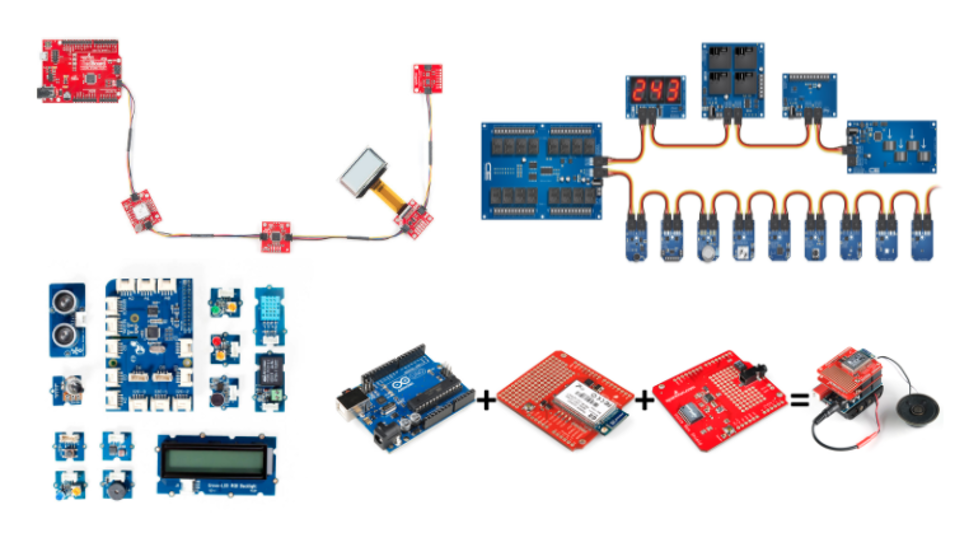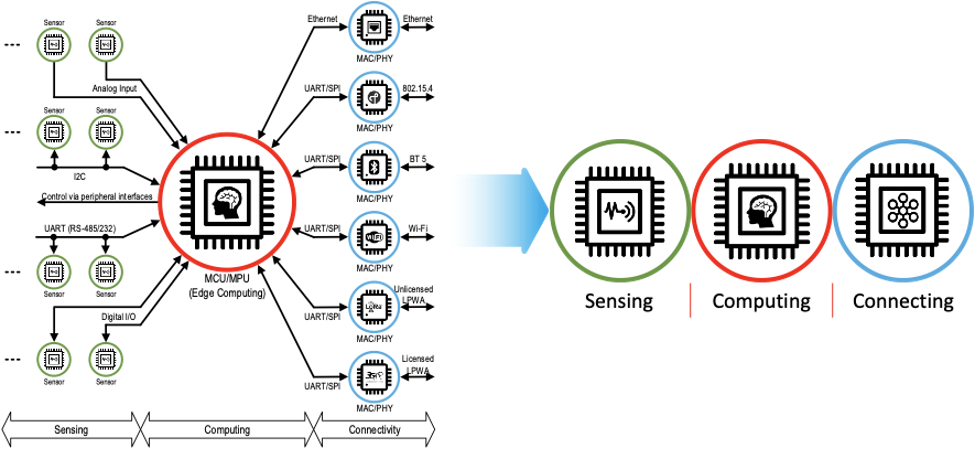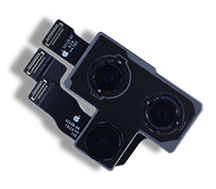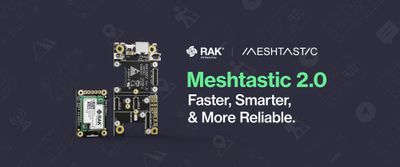Why We Make WisBlock: The Story Behind RAK’s Modular IoT Platform
All great ideas come from a basic problem that no one has solved yet. Think about humanity's milestones, like electricity, clean water to be consumed, airplanes, and art masterpieces. What these great inventions have in common is that they all come from a necessity and a desire to make the world a better place with equal opportunities for everyone.
In the field of arts, the effort to put out sometimes troubling emotions and desires can make the world better because other people who are feeling the same and are not understood can relate with those artworks and then feel less alone, therefore, connected.
So, it is fair to say that those great inventions don’t come from a single genius head but result from a specific culture and time. Here at RAKwireless, we believe that we grow together, as we can give people innovative Internet of Things (IoT) products to help develop their ideas and even fully customize end products.
However, nowadays people keep asking the same question. How to start developing an IoT project in a fast, simple, and reliable way?
Let’s rewind a little bit so we can walk together through our thinking process. First, we had a problem: developing IoT node devices is time-consuming, and it requires a lot of hardware expertise to develop a reliable and scalable unit; definitely a skill that not many people have. When you convert a problem to a question you are absolutely willing to find solutions. So, we asked ourselves: How can we make IoT simple from the hardware to the application layer without matter the technologies required by the project's requirements?
We started to think about the possible ways to create an IoT device that could tackle multiple problems at the same time, regardless of the stage of development of the project. To achieve this, we start dreaming with an easy-to-use platform that would allow anyone to create big projects, like when we were children playing with Lego blocks. We would spend hours playing, changing the pieces and the structures to make whatever our mind could imagine.
At the moment, the usual hardware development goes through a waterfall methodology with the following phases: 1) Requirements, 2) Design, 3) Implementation, 4) Verification, and 5) Maintenance. This means you usually don't go back if you get to the final stage of the device. Because this would mean you have to redesign your device and alter everything you have developed so far. Resulting in a waste of money and time. So, what if we could use a single IoT device that could work in the same way as Lego blocks but with an amazingly lightweight design, and standard clutch power such as mobile sockets? Basically, a platform to allow IoT developers to change the usual hardware development methodology to an agile one, allowing changing of sensors or communication technologies during any development stage, even if the device is already deployed in the field.
Making a WisBlock a Reality
IoT hardware development is a task with a lot of challenges. To name a few, RF interference, heat issues with sensors and boards, support battery or solar charger in a compact board. Based on this, the time to market is too long, the entry barrier is too high, and the development process is costly.
An ideal node solution for IoT is one that addresses all the challenges presented during the development process. Also, one that allows not just to build a proof of concept (PoC), but also to use them for commercial applications, and last but not least, one with a competitive price. However, the only way to address these considerations is by building a fully custom node.
Also Read How to Create Custom WisBlock Sensor or WisBlock IO Module
When we talked about agile hardware and customization, probably the first option that comes to our mind is plug-n-play modular systems, like these:

However, these products are usually too big and not suitable for industrial environments or commercial applications. We have to find a new way to interconnect modules compactly and keep in mind that we need to use high-speed communications. So, what about mobile sockets like iPhone ones? These are very compact, fast, cheap, and industrial grade.
But... How can we deal with the vibration between these modules? These connectors can be disconnected very easily in moving applications like asset tracking. Simple, screw them to make the board connection stable. With all of this in mind, we have a possible solution idea on how to make an IoT node device easy for customization. However, we still need to introduce modular concepts to make a node device used for commercial purposes.
Also Read Build your IoT Breakthroughs Fast with the WisBlock System!
The remaining challenge is competitive pricing. It is not easy to market a product at a very high price, which is the usual cause of every industry player's headache in the LoRa industry. LoRa nodes can be quite expensive since the production volume is very small, resulting in a more expensive product. What about using standard definitions to connect all fundamental blocks, even the specific scenario sensor device with a low volume? Standard blocks can be used in different sensor devices' scenarios so that the volume will be concentrated on these standard blocks. The next question here is: Can we define the standards of modular blocks for IoT?

Let’s look at this detailed analysis for the IoT Edge devices, here you can see the computer as the CPU, the main part of the IoT node devices. For example, it can be an ARM-based microcontroller. This processor connects to the sensors mostly via I2C, and it accounts for 75%. Some of the sensors connect to the computer (CPU) through the UART or digital IO. On the other side, the processor connects to the connectivity like LoRa, here is unlicensed. In summary, most of the communications interfaces are UART or SPI. Then, we have a clear concept that we can define a standard for the fundamental modular blocks as the sensor, computing, and connectivity, so no matter what kind of end scenario, it will have a very competitive cost model of the entire device.

To achieve this efficient platform with an agile hardware development methodology in mind, RAKwireless put together the efforts of many industry experts to develop an open-source platform that removes obstacles mentioned above. Whether you are a maker, developer, system integrator, entrepreneur, student, a teacher, or anyone an industry vertical the industry where the solution will be applied or project development stage, you can use WisBlock not just to build a proof of concept (PoC) but also for commercial applications.
WisBlock is a ready-to-use, reliable, and affordable IoT development platform for building compact and industrial grade IoT devices for prototyping and mass production easily and quickly. An IoT node device that easily fits into any IoT solution – no matter the industry, WisBlock will adapt seamlessly.
With four main categories – WisBlock Base, WisBlock Core, WisBlock Sensor, and WisBlock IO – modularity is possible. Like Lego blocks, this system enables us to mix and match components on the go to create different functionalities. In addition to the main hardware blocks, RAKwireless provides widely compatible ready-to-use enclosures, accessories, and antennas to get started WisBlock products.
Who can use it?
● IoT application company who want to quick build their sensor device
● Product company want to build a customized IoT embedded module
● Developers who want to fast proven their concept
Why use it?
With this comprehensive, proven platform, engineering teams can begin IoT application software development at the API level, saving them months of time and effort. It also ensures that their product innovations rest on a solid, robust technology foundation optimized for MCU-based product designs. It has a platform-based approach that allows a simplified development strategy. It eliminates unnecessary design effort, saves time, and facilitates the timely production of IoT products. Also, it minimizes risk and cost over the long run.
Ready to play with the WisBlock?
We know we are not painting the Mona Lisa, but we are making the IoT world more connected with everyone who wants to put their idea out there. We are playing with connected blocks at a high level of technology and making every day IoT solutions possible and simple.
In this eBook titled "WisBlock: A Revolutionary Concept for Agile Hardware Development," RAKwireless discusses in detail how WisBlock was born and the challenges along our development journey.
Want to know more about the concept of WisBlock? Download the e-book here.
Other useful resources to get started:
● WisBlock Documentation
● WisBlock Repository
● Create Your Own WisBlock Sensor or WisBlock IO Modules
● WisBlock 3D Print Compatible Enclosures





